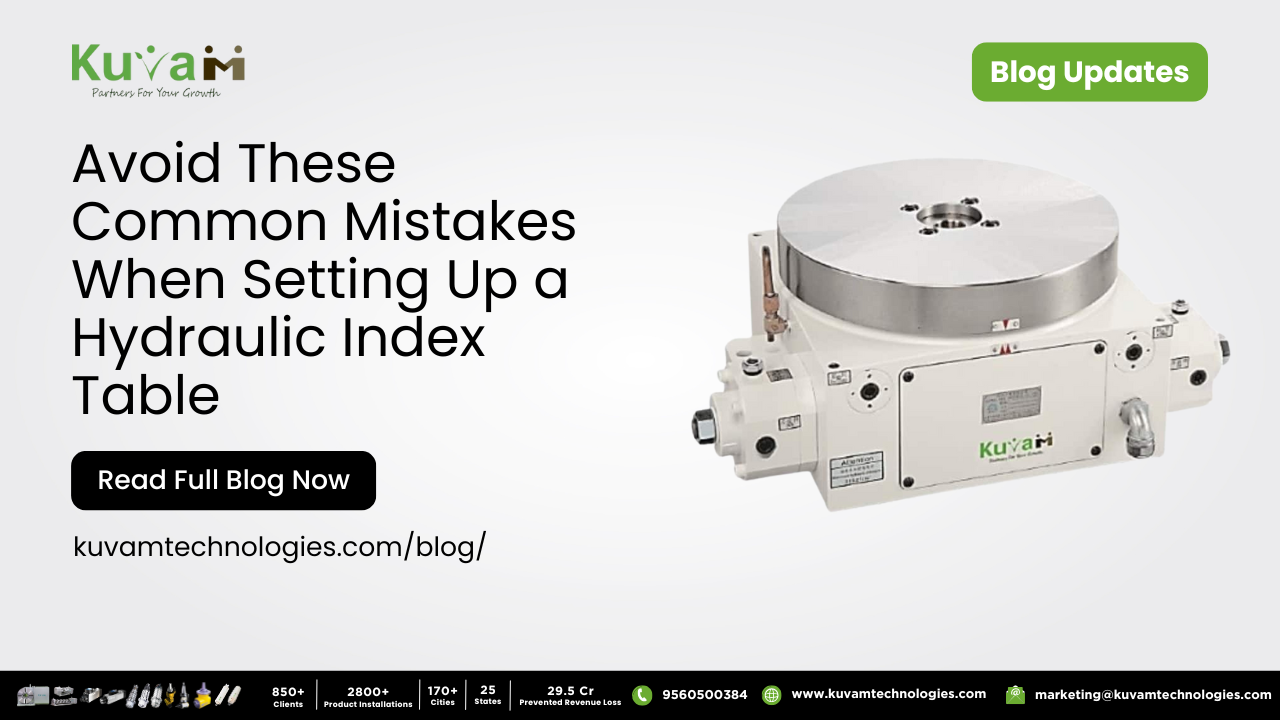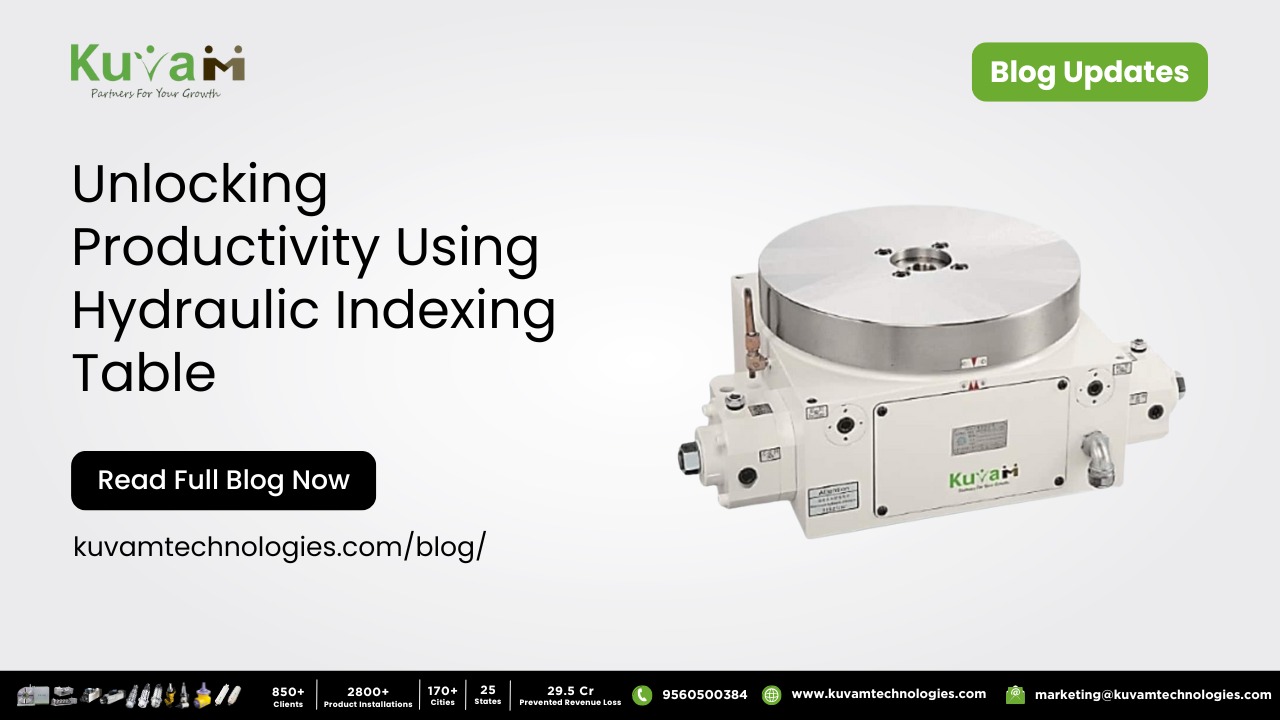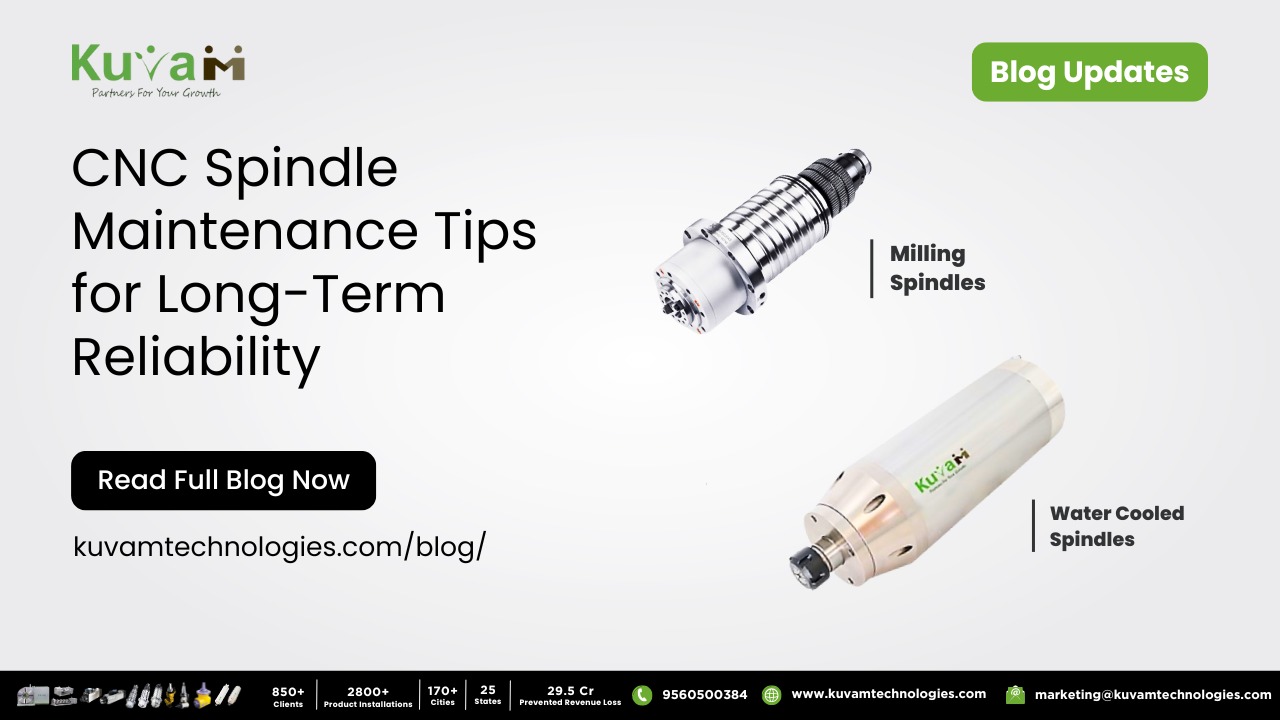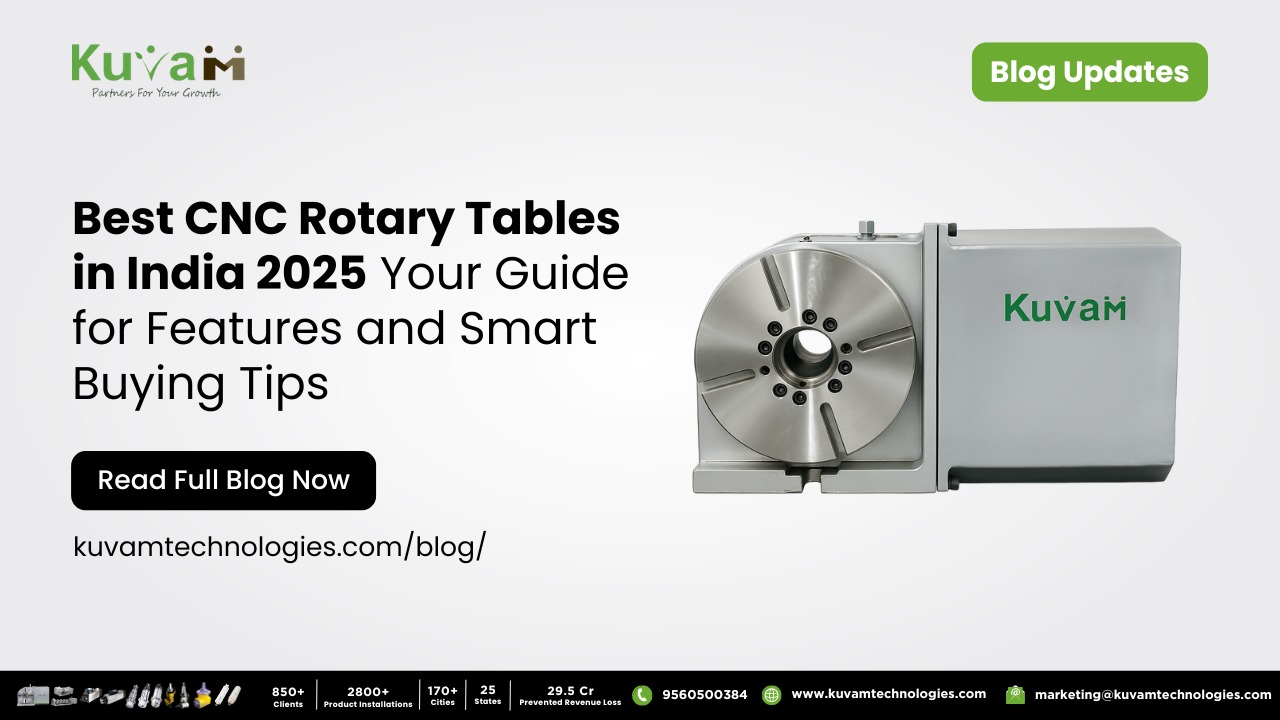If you’re in the world of precision machining, a Hydraulic Indexing table is a powerhouse for developing complicated, brilliant components. This extraordinary device lets your CNC system rotate workpieces with pinpoint accuracy, enabling multi-axis machining for industries like aerospace, automobile, and medical manufacturing. But right here’s the seize: even the first-class Rotary Indexing table can fall brief if not installed correctly. Mistakes for the duration of setup can cause steeply-priced mistakes, wasted time, and even a broken device. At Kuvam Technologies, we’ve visible all of it, and we’re here that help you avoid the most common pitfalls. In this weblog post, we’ll walk you through the errors to steer clear of when putting in place your rotary indexing table, so that you can maximize performance and precision.
Why Proper Setup of a CNC Rotary Indexing Table Matters
A Hydraulic Indexing table is the heart of multi-axis machining, permitting your CNC system to rotate workpieces to particular angles for elaborate cuts. Whether you’re crafting turbine blades or scientific implants, this device is essential for accomplishing tight tolerances and perfect finishes. However, a single misstep at some point in setup can throw off your complete operation, main to defective components or unexpected downtime. By averting those not unusual mistakes, you’ll ensure your rotary indexing table plays at its first-rate, saving you time, cash, and frustration.
Mistake 1: Misaligning the Hydraulic Indexing table
One of the largest blunders in installing a Hydraulic Indexing table is incorrect alignment with your CNC machine. Misalignment can cause inaccuracies for your machining method, resulting in elements that don’t meet specs. Imagine spending hours on a complicated project only to find the angles are off—irritating, proper? To avoid this, constantly use precision equipment like dial indicators to ensure the table’s centerline is perfectly aligned with the device’s axes.
How to Align Your CNC Rotary Indexing Table
- Use a dial indicator: Measure alignment with high-precision tools to confirm the table is parallel to the machine’s X, Y, and Z axes.
- Adjust incrementally: Make small adjustments to the table’s position and recheck until alignment is perfect.
- Routine checks: Verify alignment during regular maintenance to prevent drift over time, especially after heavy use.
Proper alignment is the foundation of precision machining, so don’t skip this step!
Mistake 2: Skipping or Rushing Calibration
Calibration is the unsung hero of a hydraulic Indexing table setup. Without it, your table’s rotational accuracy can be off, main to mistakes in angular positioning that destroy your parts. We get it—calibration can seem tedious; however, speeding or skipping it is a recipe for catastrophe. Always observe the producer’s hints and use awesome gear to make sure your hydraulic Indexing table is calibrated efficiently.
Calibration Best Practices
- Consult the manual: Every CNC rotary indexing table has specific calibration requirements—don’t guess!
- Use an angle gauge: Verify rotational accuracy with a high-precision angle gauge for reliable results.
- Recalibrate after changes: Moving or servicing your CNC machine? Recalibrate the table to maintain accuracy.
Taking the time to calibrate properly ensures your multi-axis machining projects stay on point.
Mistake 3: Poor Workpiece Fixturing
Picture this: you’ve set up your Hydraulic Indexing table, commenced the machining procedure, and all at once, the workpiece shifts. Not handiest does this break the part, but it is able to also damage your table and equipment. Improper fixturing is a commonplace mistake that can derail your precision machining efforts. The key is to use a fixturing device that’s secure and well matched with your table’s design.
Tips for Rock-Solid Fixturing
- Choose the right clamps: Use vises or clamps specifically designed for your Hydraulic Indexing table.
- Balance the workpiece: Ensure even weight distribution to avoid vibrations during rotation.
- Test before machining: Run a trial to confirm the workpiece stays secure under operational stress.
Solid fixturing keeps your CNC machine and table working in harmony for flawless results.
Mistake 4: Neglecting Regular Maintenance
Your Hydraulic Indexing table is a precision instrument, no longer a “set it and forget it” tool. Skipping protection duties like lubrication, cleaning, or analysing for wear can cause mechanical problems that compromise accuracy. Regular upkeep is essential to maintain your table jogging easily and extend its lifespan.
Maintenance Must-Dos
- Lubricate regularly: Follow the manufacturer’s recommendations for lubricating bearings and gears.
- Keep it clean: Remove chips, dust, and debris from the table surface to prevent interference with precision machining.
- Inspect for wear: Check critical components like bearings and gears, replacing them before they fail.
A well-maintained CNC rotary indexing table is a reliable partner in your multi-axis machining projects.
Mistake 5: Incorrect Programming Parameters
Programming errors can wreak havoc on your hydraulic indexing table setup. Setting incorrect feed rates, rotational speeds, or tool paths can lead to poor machining outcomes or even damage your equipment. It’s easy to make a typo or overlook a parameter, but these mistakes can be costly in precision machining.
How to Nail Your CNC Programming
- Match the table’s specs: Ensure your CNC program accounts for the table’s rotational limits and capabilities.
- Use simulation software: Test your program virtually to catch errors before running it on the CNC machine.
- Double-check with experts: For complex setups, consult experienced programmers to review your code.
Accurate programming is the key to unlocking the full potential of your hydraulic indexing table.
Mistake 6: Underestimating Operator Training
Even the most advanced rotary indexing table is only as good as the operator behind it. Lack of training can lead to setup errors, inefficient operation, or even safety hazards. Investing in proper training ensures your team knows how to handle the table’s features and avoid costly mistakes.
Building Operator Confidence
- Hands-on training: Provide practical sessions with experienced instructors to teach setup and operation.
- Know the manual: Encourage operators to study the rotary indexing table manual for specific insights.
- Offer refreshers: Keep skills sharp with periodic training on new techniques and technologies.
Well-trained operators are your best asset for maximizing multi-axis machining efficiency.
Mistake 7: Ignoring Environmental Factors
Your CNC rotary indexing table operates in a real-world environment, and factors like temperature, vibration, or dust can affect its performance. For example, thermal expansion in a hot workshop can throw off precision, while vibrations from nearby equipment can disrupt alignment. Ignoring these factors is a subtle but costly mistake.
Controlling the Environment
- Monitor temperature: Keep your workshop at a stable temperature to minimize thermal expansion.
- Reduce vibrations: Place your CNC machine on a stable surface and isolate it from heavy machinery.
- Control dust: Use dust extraction systems to keep your rotary indexing table clean and functional.
A controlled environment ensures consistent precision machining results.
Why Partner with Kuvam Technologies?
At Kuvam Technologies, we’re obsessed with helping you succeed in precision machining. Our hydraulic indexing table are engineered for sturdiness, accuracy, and simplicity of use, making them best for multi-axis machining programs. We don’t simply promote devices—we provide expert steering, education, and support that will help you keep away from those common mistakes. Whether you’re a seasoned machinist or new to rotary indexing tables, we’re right here to make sure your setup procedure is clean and your outcomes are fantastic.
Conclusion
Setting up a rotary indexing table shouldn’t be a headache. By averting these seven not unusual errors—misalignment, poor calibration, improper fixturing, neglected protection, programming errors, inadequate schooling, and ignoring environmental factors—you can make certain your CNC machine delivers pinnacle-notch outcomes. At Kuvam Technologies, we’re dedicated to empowering your multi-axis machining achievement with exquisite systems and professional help. Ready to take your machining to the next stage? Let’s make it appear!
FAQs About Setting Up a Hydraulic Rotary Indexing Table
1. What is a Hydraulic Rotary Indexing Table, and why is it Important for Precision Machining?
A CNC rotary indexing table is a device used with a CNC machine to rotate workpieces precisely during multi-axis machining. It allows for accurate angular positioning, enabling the creation of complex parts in industries like aerospace and automotive. Proper setup of a rotary indexing table is crucial for precision machining, as it ensures tight tolerances and high-quality finishes, reducing errors and material waste.
2. How Do I Properly Align a Hydraulic Rotary Indexing Table?
Proper alignment of a rotary indexing table with your CNC machine is essential for precision machining. Use a dial indicator to measure the table’s alignment with the machine’s X, Y, and Z axes. Adjust the table incrementally until it’s perfectly parallel, and recheck alignment during routine maintenance to prevent inaccuracies in multi-axis machining projects.
3. What Happens if I Skip Calibration of My Hydraulic Rotary Indexing Table?
Skipping calibration of a rotary indexing table can lead to inaccurate rotational movements, causing errors in angular positioning during precision machining. This can result in defective parts and wasted resources. To avoid this, follow the manufacturer’s calibration guidelines, use a high-precision angle gauge, and recalibrate after any CNC machine maintenance or relocation.
4. How Can I Ensure Proper Workpiece Fixturing on a Hydraulic Rotary Indexing Table?
Proper fixturing is critical for multi-axis machining with a rotary indexing table. Use clamps or vises designed for your table, ensure the workpiece is balanced to prevent vibrations, and test the setup with a trial run. Secure fixturing prevents workpiece shifts, protecting both the CNC machine and table from damage while ensuring precision machining accuracy.
5. Why is Regular Maintenance Important for a Hydraulic Rotary Indexing Table?
Regular maintenance keeps your hydraulic rotary indexing table in top condition for precision machining. Lubricate moving parts, clean the table surface to remove debris, and inspect components like bearings for wear. Neglecting maintenance can lead to mechanical failures, reduced accuracy, and costly repairs, impacting your multi-axis machining performance.




